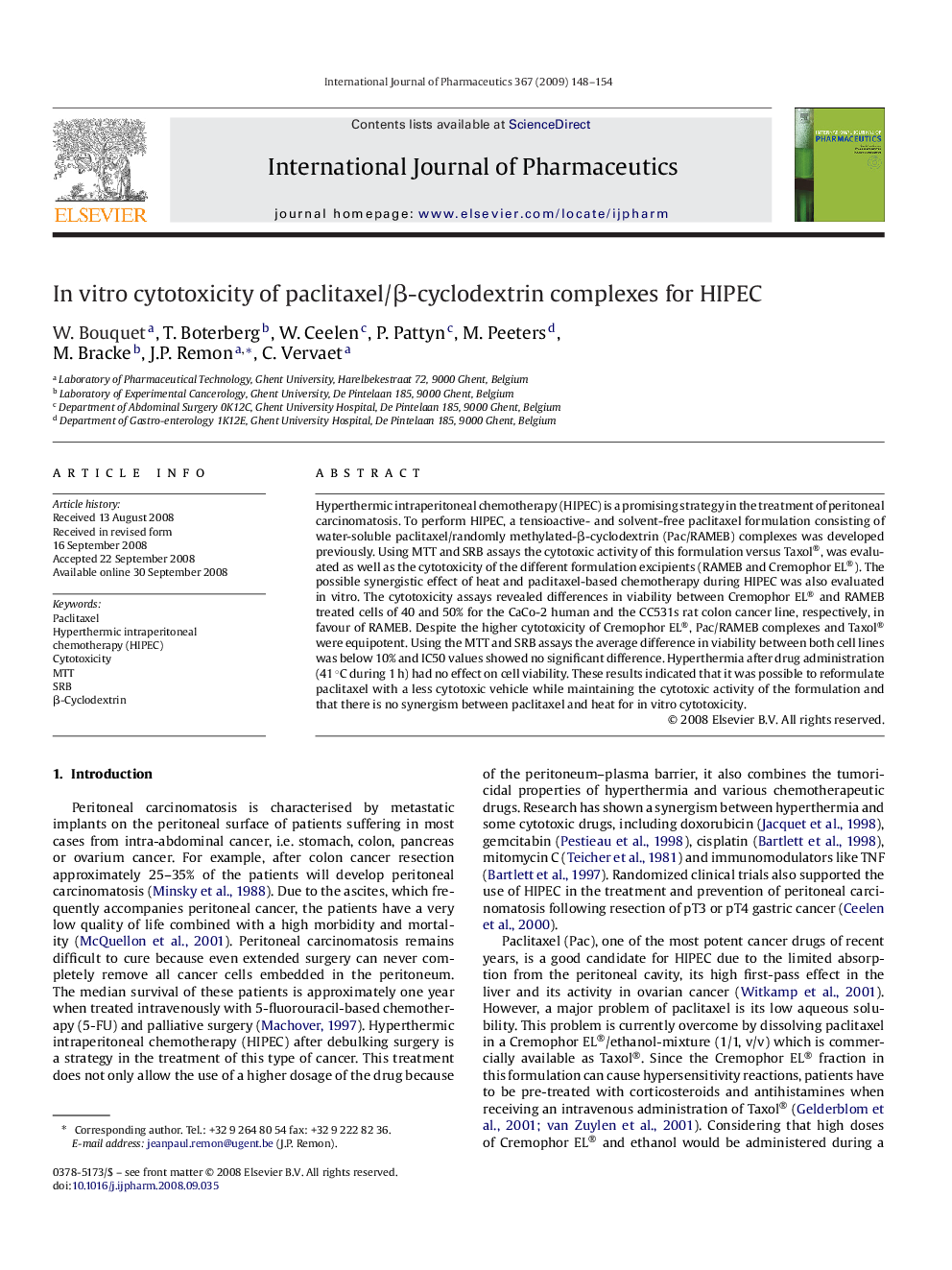| Article ID | Journal | Published Year | Pages | File Type |
|---|---|---|---|---|
| 2505020 | International Journal of Pharmaceutics | 2009 | 7 Pages |
Hyperthermic intraperitoneal chemotherapy (HIPEC) is a promising strategy in the treatment of peritoneal carcinomatosis. To perform HIPEC, a tensioactive- and solvent-free paclitaxel formulation consisting of water-soluble paclitaxel/randomly methylated-β-cyclodextrin (Pac/RAMEB) complexes was developed previously. Using MTT and SRB assays the cytotoxic activity of this formulation versus Taxol®, was evaluated as well as the cytotoxicity of the different formulation excipients (RAMEB and Cremophor EL®). The possible synergistic effect of heat and paclitaxel-based chemotherapy during HIPEC was also evaluated in vitro. The cytotoxicity assays revealed differences in viability between Cremophor EL® and RAMEB treated cells of 40 and 50% for the CaCo-2 human and the CC531s rat colon cancer line, respectively, in favour of RAMEB. Despite the higher cytotoxicity of Cremophor EL®, Pac/RAMEB complexes and Taxol® were equipotent. Using the MTT and SRB assays the average difference in viability between both cell lines was below 10% and IC50 values showed no significant difference. Hyperthermia after drug administration (41 °C during 1 h) had no effect on cell viability. These results indicated that it was possible to reformulate paclitaxel with a less cytotoxic vehicle while maintaining the cytotoxic activity of the formulation and that there is no synergism between paclitaxel and heat for in vitro cytotoxicity.
